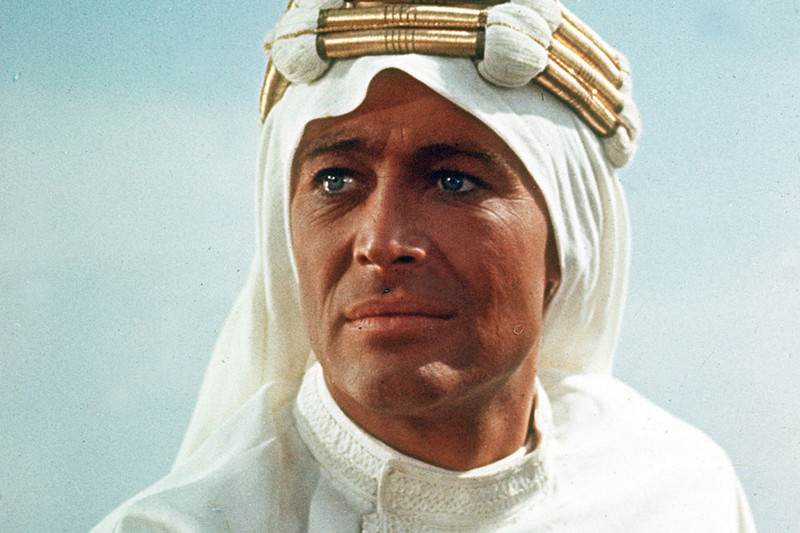
If you are the man with the money and somebody comes to you and says he wants to make a film that’s four hours long, with no stars, and no women, and no love story, and not much action either, and he wants to spend a huge amount of money to go film it in the desert – what would you say?
– Omar Sharif on Lawrence of Arabia
Lawrence of Arabia opens in 1935 with a motorcycle accident which results in a tremendous casualty, the death of military officer T. E. Lawrence. At his funeral, some people lament the loss of an incredible man capable, others speak of him as being a sadist and insolent. And, thus, is established the mystery of who was T. E. Lawrence.
Travelling back in time, the audience is taken to Cairo in 1916 right in the middle of World War I. Place where a young insubordinate lieutenant is assigned with the field observation of the Arab revolt against the Turks, leaded by Prince Faisal (later known as Faisal I of Iraq). From then on starts a journey through the Arabian desert where following the path of T. E. Lawrence, the audience watches the transformation of the British observant into the leading figure of the Arab revolt.
Directed by David Lean (who had previously directed important films such as Oliver Twist, Great Expectations or Brief Encounter during the 1940s and Hobson’s Choice, Summertime and The Bridge on the River Kwai during the 1950s), Lawrence of Arabia was shot across Morocco, Jordan and Spain. Made in Technicolor and Super Panavision 70, the film starred Peter O’Toole, Anthony Quinn, Alec Guinness, Claude Rains, Arthur Kennedy and Omar Sharif.
Upon being selected for preservation in 1991, it was labelled by the librarian of Congress James H. Billington as not only “culturally, historically and aesthetically significant” but also made part of a group of “films that had and will continue to have cultural, historical or aesthetic importance.”
With that being said, let’s recapitulate some of the reasons why Lawrence of Arabia was worthy of such appraisal, in other words, let’s remember some of the reasons why Lawrence of Arabia is one of the greatest epics of all time.
1. The emblematic figure of T. E. Lawrence
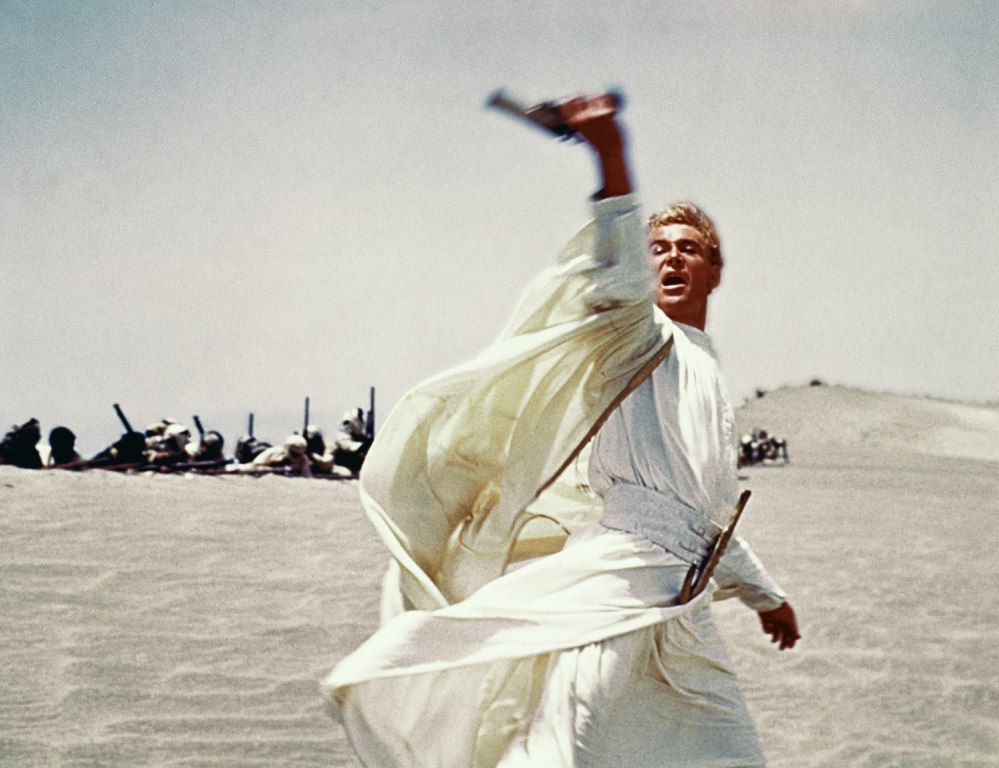
It may sound rather an obvious reason when looking at the film, but really, the main character in Lawrence of Arabia is not only the conductor of the plot and action, but also, a symbol of human nature and for that matter, one of the most faithful and truthful depictions of such subject.
Even though the film omits facts of his past life – like the previous knowledge over Arabic culture gained in the expeditions made to Syria and Lebanon in his early youth – it is right in depicting T.E. Lawrence through an observational point of view. Which is appropriate through the kind of ‘neutral’ depiction the films draws on this mysterious figure.
Putting apart some clearly fictionalized details, the director is able to guide the audience through Lawrence’s journey as he enters the desert with an Arab guide and gets out of it with a full army composed of different Arab tribes.
As the facts unfold the audience is taken on a double journey that which happens around the man himself – the conquest of Aqaba, assaults to trains, reunions… – and inside the man himself as he slowly goes from a mere observer enraged by the xenophobic death of his guide to becoming a war lord capable of massacring thousands.
Thus, the mystique around Lawrence’s figure and his accomplishments, because he is a symbol of the human essence, capable of changing his attitude, words and positions in order to fulfil either an expectation, to fit in a group or simply to play a role that was given to him and this is why Lawrence, a clear outsider, is capable of reuniting all the Arab tribes: because he is able to show them that it is in their interest.
And there is a moment in the film that justifies this point of view, the moment where the American journalist
Jackson Bentley (portrayed by an aged Arthur Kennedy) talks with prince Faisal (Alec Guinness):
Jackson Bentley: I’m looking for a hero.
Prince Faisal: Indeed, you do not seem a romantic man.
Jackson Bentley: Oh, no! But certain influential men back home believe the time has come for America to lend her weight to the patriotic struggle against Germany…and Turkey. Now, I’ve been sent to find material that makes this war seem more…
Prince Faisal: Enjoyable?
Jackson Bentley: Oh, hardly that, sir. But to show it in its more…adventurous aspects.
Prince Faisal: You are looking for a figure that will draw your country towards war?
Jackson Bentley: All right, yes.
Prince Faisal: Lawrence is your man.
Although this conversation fails in historical accuracy, because by this time the United States had already entered World War I, it still remains interesting because it retains Lawrence’s importance, what he symbolizes and his ability to assume a role given to him, in this case, that of a hero. With that being said, T. E. Lawrence is what makes the film live and is one of the best examples of a solid strong character capable of leading a character driven film.
2. The film’s structure
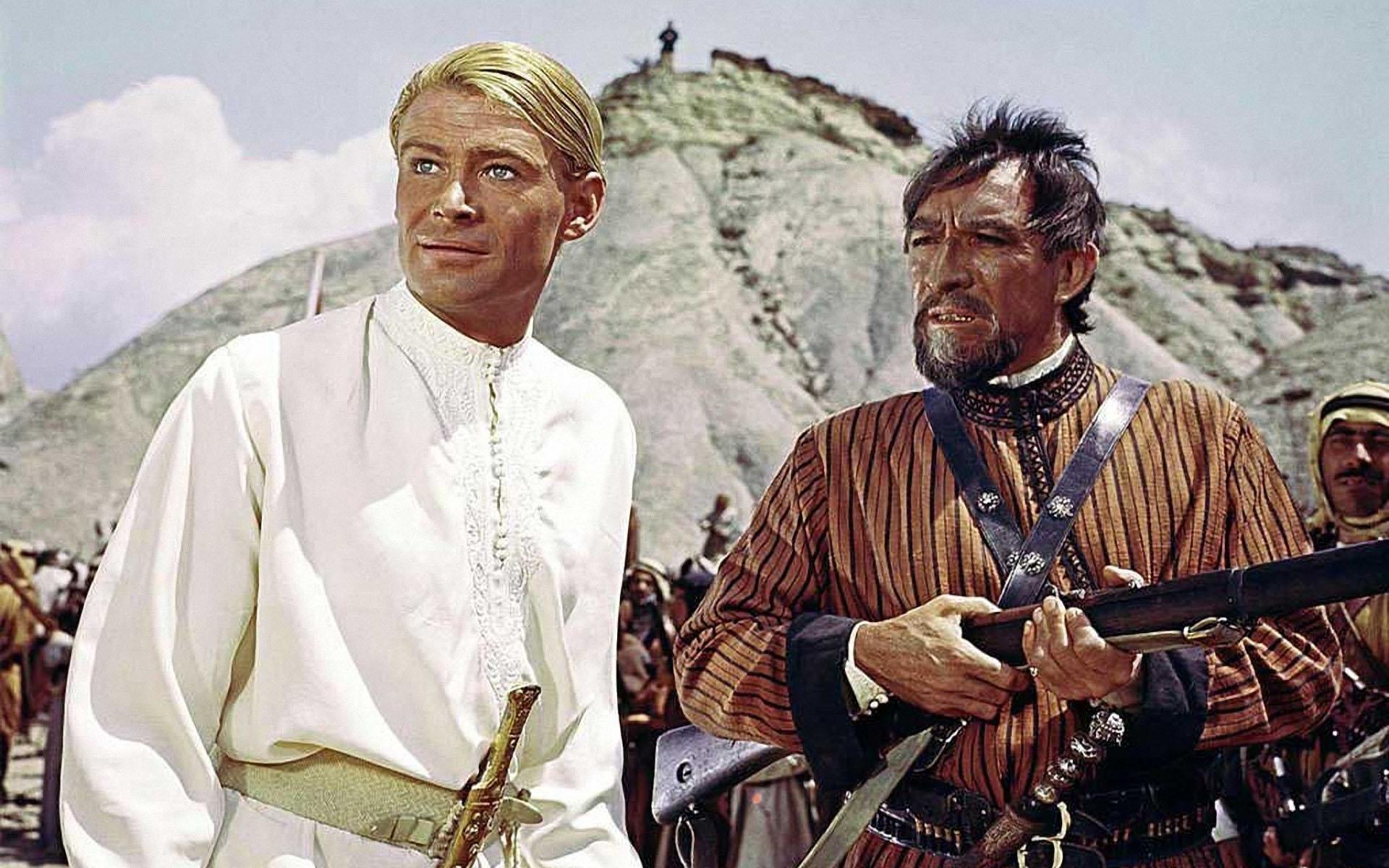
As stated before, the film adopts a sort of observational point of view which is responsible for driving it away from the bio epic realm and add to it the characteristics of adventure, drama and historical films. Nevertheless, there is one specific characteristic about Lawrence of Arabia is the film’s fluidity. Which is also noted by the critics at the time:
For a movie that runs 216 minutes, plus intermission, Lawrence of Arabia is not dense with plot details. It is a spare movie in clean, uncluttered lines, and there is never a moment when we’re in doubt about the logistical details of the various campaigns.
And a vital key to achieve this fluidity resides in tone used in film’s structure. This is a sort of neutral and ambiguous tone that does not offer an opinion, theory or justification on Lawrence and his actions, portraying him as a sort of legend on which many viewers – mimicking the other characters – elaborate their own theories and opinions taking this man either as a great hero or as an exhibitionist fraud.
To be fair, the film has in its basis two lines. One, following the outside of the character, therefore, justifying our constant necessity of having him on screen and being close to him and his actions. Two, following the character’s complex interior. Complex due to the palette of contradictory sentiments Lawrence experiences and is dominated by throughout the film – vanity, desire, rage, arrogance, fulfilment. And it is in the thin frontier between these two lines that David Lean chose to build and shot his film.
Being this the reason why the director and his team were able to create such a dense and profound portrait of this man by painting a portrait not only of the man himself and his interior conflicts (for instance, his sexual orientation) but also the portrait of the world that surrounds him either it is the bureaucratic British system, a modern and developed world or the wilderness of the Arabian landscape and its people (which Lawrence identifies with the most).
Although it is true that Lawrence was instrumental in enlisting the desert tribes on the British side in the 1914-17 campaign against the Turks, the movie suggests that he acted less out of patriotism than out of a need to reject conventional British society, choosing to identify with the wildness and theatricality of the Arabs. (…) What Lean, Bolt and O’Toole create is a sexually and socially unconventional man who is simply presented as what he is, without labels or comment. Could such a man rally the splintered desert tribes and win a war against the Turks?
3. Historical and cultural value
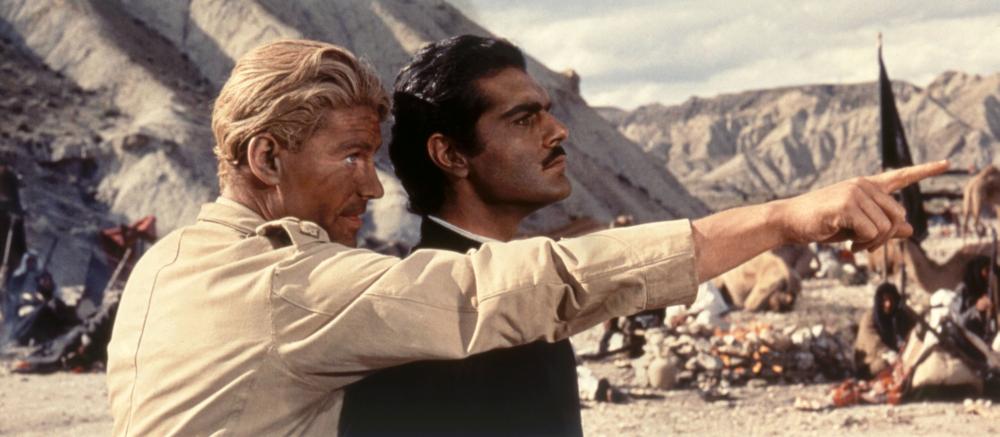
Even though the film’s historical accuracy is questionable (which is also a reason why this film was and still is so popular attracting attention from the ordinary viewer, critics, historians and cinephiles), the film is undoubtedly one of the best historical films ever made. Not only in scale but in subject.
Putting T. E. Lawrence aside for a moment, the film also offers a vision of the bureaucracies of war. And bureaucracies is the right word, since the film also depicts the conflict’s backstage where interests, observation, alliances and tactical strategies are dominant elements.
So, despite all the divergences between film and reality, Lawrence of Arabia is historically and culturally a valid object and one of the utmost importance in depicting the mechanics of the conflict as well as the parties it evolved. The facts about a specific character may not be a hundred percent truthful, however, the universe in which the character belongs is carefully depicted.
And only if you fall asleep throughout the all film you fail to learn about the distribution of the Arabian territory during this period, as well as, the animosity between the various parties, the interests and alliances made during World War I (concerning that part of the territory) and, of course, most importantly that war is not made on the battlefield.
Additionally, when talking about the film in a cultural perspective two things must be mentioned: its score and its art direction. Two elements that, for the most of it, approximate the sets and the film’s atmosphere to reality.
Regarding the film’s art direction, its use of objects and more importantly of colours respects the patterns and schemes of Arabian tribal societies through vests, swords and in this field the actors reveal also an intense care in being truthful to the ranks and status of the characters they were playing.
About the film’s score, it is one of the richest scores in film history because not only it completes the environment and atmosphere the film paints on screen as it also is capable of including all the other elements part of the film’s ambiguity – questions related to Lawrence’s interior, great battle scenes – while incorporating western and eastern musical notes, rhythms and instruments.
4. Editing
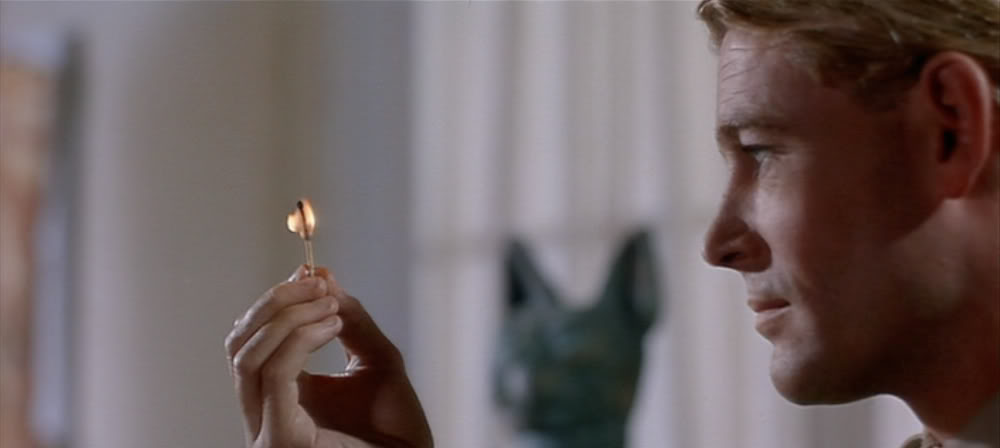
This was a specific topic I was looking forward to develop as I was writing this article, however, I came across a very complete solely focused on the importance of Lawrence of Arabia in the film editing field.
It concentrated on the sharp, simple and effective editing style of Lawrence of Arabia, which is actually a characteristic of David Lean’s works – who prior to being a film director was a film editor for quite some time. In this sequence, it nominated a number of aspects to have in consideration in Lawrence of Arabia’s being the most important about the film’s transitions.
From scene to scene the transitions in Lawrence of Arabia were for the most part done by simple cuts and not by recurring to effects. So, naturally, the recurrent use of this style created not only established rhythmical patterns but also proximity between spectator and film. Another important notion is the film’s use of sound as a mean of transition by softening it or creating continuity.
5. Aesthetic value






There is much to be taken in consideration and learn from this film: use of colour, composition and camera placement, how to position actors in a given scene, depiction of contradictory feelings (like loneliness in the midst of a war party)…
However, instead of words and theories, like most people who have watched Lawrence of Arabia and remember the film by its astonishing beauty, we shall recur to a couple of images in order to justify the film’s aesthetic value.
6. Performances
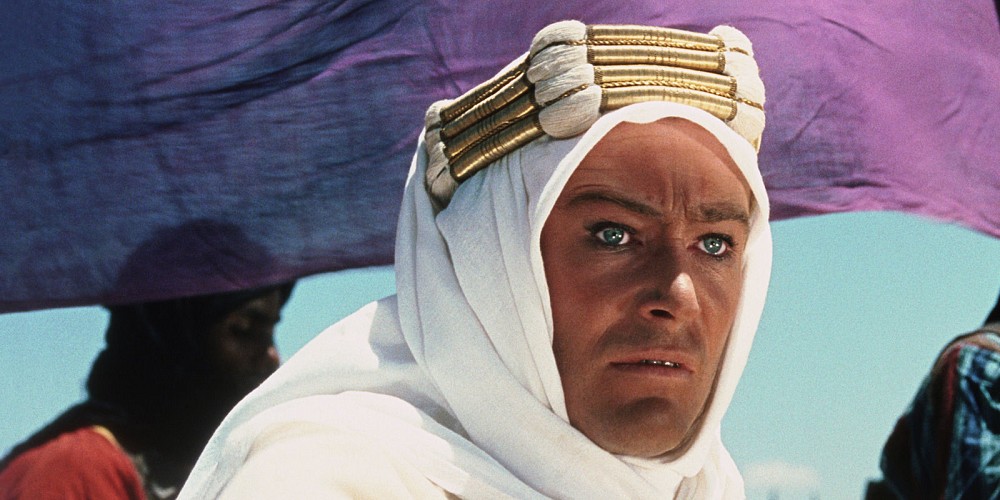
To talk about Lawrence of Arabia and not address a note to the cast and respective performances is not right because much of the film’s success resides precisely on their great work. So, in starting by the main character, T. E. Lawrence, who was portrayed by Peter O’Toole, we have to remember that O’Toole wasn’t a big star at the time, in fact, the majority of the cast were either virtually unknown until this film (the case of Omar Sharif) or already ‘past their youth’, the cases of Alec Guinness and Arthur Kennedy.
Great names of the British and American cinema and theatre. Guinness having prior to Lawrence of Arabia famously played eight different characters in Kind Hearts and Coronets (1949) and Kennedy a big name in Shakespearean theatre.
Returning to Peter O’Toole, he had a huge challenge in portraying a man with a complex character and his many moods, also noteworthy are the subtle ways the actor works around Lawrence’s homosexuality.
On the supporting cast, Anthony Quinn gives a great and cunning performance as an Arab Lord named Auda that leads one of largest and most powerful tribes; Omar Sharif portrays a man which is a symbol of the Arab heart and what it values (honour, family, unity, belief); Arthur Kennedy is the sort of neutral party that understands the value and influence of a figure like Lawrence in a world at war, but also, he is like the audience who follows Laurence and tries to understand his ambiguous personality.
Alec Guinness a deep and thoughtful performance as the royal prince Faisal whose place and importance to the film is defined in the conversation he has with the British Officers in which he states:
Prince Faisal: There’s nothing further here for a warrior. We drive bargains. Old men’s work. Young men make wars, and the virtues of war are the virtues of young men. Courage and hope for the future. Then old men make the peace. And the vices of peace are the vices of old men. Mistrust and caution. It must be so.
General Allenby: I thought I was a hard man, sir.
Prince Faisal: You are merely a general. I must be a king.